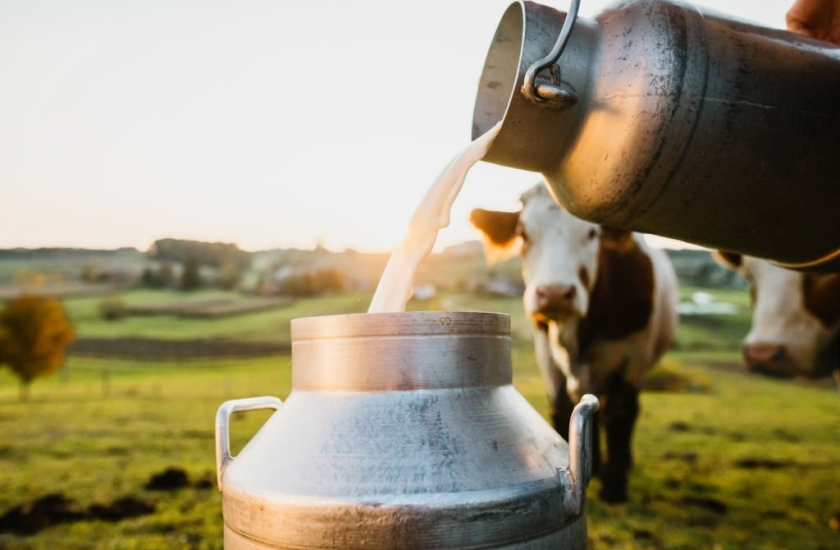Milk
-
Beefs
Beefs
-
Chicken
Chicken
-
Pork
Pork
-
Eggs
Eggs
-
Fish
Fish
-
Lamb
Lamb
-
Goat Meat
Goat Meat
-
Honey
Honey
-
Sea Food
Sea Food
-
Milk
Milk
-
Cheese
Cheese
-
Yogurt
Yogurt
Our Brochures
Contact Us
Social Media


Milk is a white liquid food produced by the mammary glands of mammals. It is the primary source of nutrition for young mammals before they are able to digest solid food. Immune factors and immune-modulating components in milk contribute to milk immunity. Early-lactation milk, which is called colostrum, contains antibodies that strengthen the immune system and thus reduce the risk of many diseases. Milk contains many nutrients, including protein and lactose. As an agricultural product, dairy milk is collected from farm animals. More than six billion people worldwide consume milk and milk products, and between 750 and 900 million people live in dairy-farming households.
Milk Types of consumption
There are two distinct categories of milk consumption: all infant mammals drink milk directly from their mothers’ bodies, and it is their primary source of nutrition; and humans obtain milk from other mammals for consumption by humans of all ages, as one component of a varied diet. In many cultures, especially in the West, humans continue to consume milk beyond infancy, using the milk of other mammals (especially cattle, goats and sheep) as a food product. Initially, the ability to digest milk was limited to children as adults did not produce lactase, an enzyme necessary for digesting the lactose in milk. People therefore converted milk to curd, cheese, and other products to reduce the levels of lactose.
Milk is processed into a variety of products such as cream, butter, yogurt, kefir, ice cream, and cheese. Modern industrial processes use milk to produce casein, whey protein, lactose, condensed milk, powdered milk, and many other food-additives and industrial products. Whole milk, butter, and cream have high levels of saturated fat. The sugar lactose is found only in milk, and possibly in forsythia flowers and a few tropical shrubs. Lactase, the enzyme needed to digest lactose, reaches its highest levels in the human small intestine immediately after birth, and then begins a slow decline unless milk is consumed regularly.
MilkHealth benefits
The composition of milk differs widely among species. Factors such as the type of protein; the proportion of protein, fat, and sugar; the levels of various vitamins and minerals; and the size of the butterfat globules, and the strength of the curd are among those that may vary.
For example:
Human milk contains, on average, 1.1% protein, 4.2% fat, 7.0% lactose (a sugar), and supplies 72 kcal of energy per 100 grams.
Cow’s milk contains, on average, 3.4% protein, 3.6% fat, and 4.6% lactose, 0.7% minerals and supplies 66 kcal of energy per 100 grams.
Milk Nutritional value
Processed cow’s milk was formulated to contain differing amounts of fat during the 1950s. One cup (250 mL) of 2%-fat cow’s milk contains 285 mg of calcium, which represents 22% to 29% of the daily recommended intake (DRI) of calcium for an adult. Depending on its age, milk contains 8 grams of protein, and a number of other nutrients[which?] (either naturally or through fortification).
Milk Composition
Milk is an emulsion or colloid of butterfat globules within a water-based fluid that contains dissolved carbohydrates and protein aggregates with minerals. Because it is produced as a food source for the young, all of its contents provide benefits for growth. The principal requirements are energy (lipids, lactose, and protein), biosynthesis of non-essential amino acids supplied by proteins (essential amino acids and amino groups), essential fatty acids, vitamins and inorganic elements, and water.Normal bovine milk contains 30–35 grams of protein per liter, of which about 80% is arranged in casein micelles. Total proteins in milk represent 3.2% of its composition.
